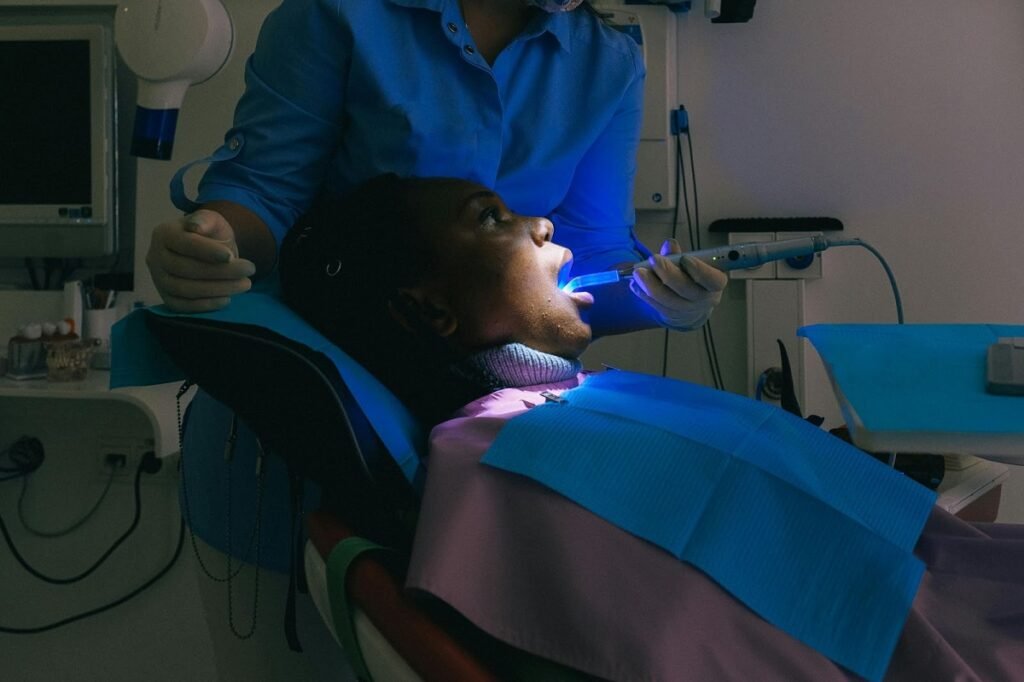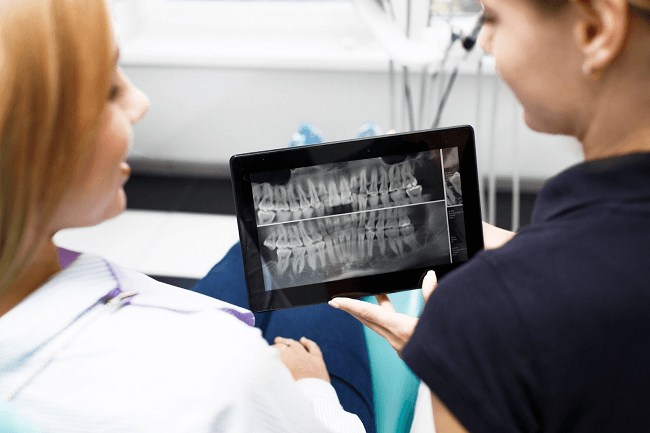Dental technology has come a long way, and one of the biggest changes is the dental oral scanner. These handheld tools let dentists take accurate digital pictures of a patient’s mouth without using messy and uncomfortable materials. Whether you’re a dentist looking to update your clinic or just curious about how these tools work, this guide will explain everything you need to know—from how dental oral scanners work to their benefits, uses, and what to look for when choosing the right one.

What is a Dental Oral Scanner?

A dental oral scanner is a small, handheld device that takes detailed 3D pictures of a patient’s mouth. It replaces the old method of using trays filled with impression material, which is messy and uncomfortable. These scanners work by capturing clear images of the teeth and gums, creating a precise 3D model used to design crowns, bridges, aligners, and other dental work. They are now a must-have tool in many modern dental offices.
How Do Dental Oral Scanners Work?
Dental image scanners use advanced technology, like special cameras and light, to take detailed digital pictures of a patient’s teeth and gums. The process is quick, easy, and very accurate.
- Preparation: Before scanning starts, the dentist makes sure the mouth is ready. This may include drying the teeth or, in some cases, applying a thin layer of powder to help get better images. However, most modern scanners don’t need powder anymore, making the process even easier.
- Scanning: The handheld scanner is gently moved around the patient’s mouth. It captures thousands of pictures every second from different angles, including hard-to-reach areas like the back molars, so no detail is missed.
- Image Processing: After scanning, the scanner’s software puts all the pictures together to create a 3D model in real-time. This model is very accurate and shows the exact shape and position of the teeth and soft tissue.
- Review and Share: Once the scan is finished, the dentist can immediately check the model on a screen. This model can be used to plan treatment, diagnose problems, or sent directly to a dental lab—without the need for messy traditional impressions.
This quick, simple process helps the dentist work faster and makes the experience more comfortable for the patient.
Benefits of Using Dental Oral Scanners
Dental restorative scanners are changing modern dental practices by offering many benefits for both dentists and patients. Here are some of the most important advantages:
1. Improved Patient Comfort

Traditional dental impressions require patients to bite into trays filled with sticky, gooey material, which can be uncomfortable and make people gag—especially for those with sensitive reflexes. Dental X-ray film scanners, like the Aidite A-IS Pro dental oral scanner, completely remove this discomfort. The scanning process is quick, gentle, and doesn’t use any material in the mouth, making it a much more pleasant experience for patients of all ages.
2. Faster Procedures
One of the biggest benefits of digital scanning is speed. What used to take 10–15 minutes with traditional impressions now only takes a few minutes. Dentists can quickly complete a full-mouth scan and move on to treatment or fixing the teeth. This saves time and makes the clinic run more smoothly, reducing how long patients need to sit in the dentist’s chair.
3. Higher Accuracy and Precision
Digital scans offer very detailed and accurate 3D images of the teeth and gums. This high level of accuracy ensures that crowns, aligners, and other dental work fit better and need fewer changes or fixes. The result is better dental work and more confidence in the results
4. Eco-Friendly and Waste-Free
Dental image scanners are a more environmentally friendly option. They don’t need impression trays, disposable materials, or physical models sent to labs, which reduces waste. This makes digital dentistry a greener choice, helping dental clinics become more eco-friendly.
5. Better Communication with Patients
Scanners let dentists show patients real-time 3D images of their own teeth and gums on a screen. This helps patients understand their dental problems and treatment plans better. As a result, patients are more likely to agree to treatment and feel confident in the care they’re receiving.
6. Better Workflow and Overall Efficiency
By making the impression process easier and allowing digital files to be sent directly to labs or in-house systems, dental oral scanners improve the flow of work in the clinic. There’s less waiting, fewer fixes, and faster results, which creates a smoother experience for both the dental team and the patient.
In short, dental oral scanners, including the Aidite dental oral scanner, improve comfort, speed, and accuracy while supporting eco-friendly and efficient dental care. They’re a win-win for clinics looking to modernize and patients looking for a better dental experience.
Common Applications of Dental Oral Scanners
Dental restorative scanners are becoming essential tools in many areas of dentistry, helping dentists work more efficiently, accurately, and comfortably for patients. Here are some key ways these devices are used:
- Restorative Dentistry
One of the most common uses for dental image scanners is in restorative dentistry. This includes creating crowns, bridges, and veneers. Instead of using messy molds, the dentist uses the scanner to capture a 3D image of the teeth. This digital file is sent to the dental lab, making the process quicker and leading to better-fitting results.
- Orthodontics

Scanners play a significant role in orthodontics, especially for patients receiving clear aligners like Invisalign. The 3D scans help dentists plan treatments accurately and track teeth movement over time. If needed, adjustments can be easily made throughout the process.
- Dental Implants
When placing dental implants, precision is crucial. Dental oral scanners help by providing detailed images of the jawbone and gums, allowing dentists to decide where to place the implant accurately. This makes the procedure smoother and safer.
- General Dentistry
In routine dental check-ups, scanners are used to monitor the teeth and gums. They help detect early signs of issues like tooth wear, cracks, or gum recession. This allows dentists to address minor problems before they become more serious.
- Pediatric Dentistry
Scanners are perfect for children because they are fast and don’t require the use of messy materials. Many kids dislike traditional impressions, but scanning is much more comfortable for them. It enables dentists to get the necessary images without causing stress.
Dental oral scanners are flexible tools that improve care in many areas of dentistry, benefiting both children and adults.
Key Features to Look for in a Dental Oral Scanner
When picking a dental scanner, look for features like scanning speed, accuracy, and how well it works with your clinic’s software. Aidite dental oral scanners stand out in these areas, offering high-quality images and easy setup with your current systems, making them a great choice for modern dental offices. Here are the top features to consider:
- Scanning Speed and Ease of Use: Choose a scanner that captures images fast and has simple software. Quicker scans mean less time in the chair and better efficiency.
- Accuracy and Detail: Clear imaging is crucial for making precise dental work. Pick a scanner known for its accuracy to avoid mistakes and extra work.
- Size and Comfort: Dental image scanners come in different sizes. A smaller, lighter scanner is easier to handle and more comfortable for patients—especially those with smaller mouths.
- Software Compatibility: Ensure the scanner works well with your current software or dental lab systems. A flexible scanner gives you more options and doesn’t limit you to one brand or lab.
- Live Scanning Preview: A live preview lets you see the scan in real-time. This helps catch any missed areas and ensures you get a full, correct model on the first try.
- Wired vs. Wireless Options: Wireless scanners are easier to move but may need more charging. Wired models are more stable but less portable.
- Training and Support: Good customer service and training help a lot. Choose a company that offers support for getting started, troubleshooting, and updates.
Cost of Dental Oral Scanners
Dental image scanners are a big investment, and their prices usually range from $15,000 to $50,000, depending on the brand, features, and extras included. Prices can change based on:
- Brand and Model: Top brands like iTero and 3Shape are usually more expensive, with prices ranging from $35,000 to $50,000. Mid-range models like Medit i700 and Carestream CS 3700 may cost between $20,000 and $30,000.
- Features: Scanners with advanced features like color scanning, live video, and clearer images can cost more.
- Software: Some models come with built-in software and cloud storage, while others may need extra software or subscription fees for updates and support.
- Accessories: Some scanners include extra equipment like carts, computers, or portable systems, which can increase the overall price.
Ongoing Costs:
Some dental oral scanners have yearly service fees for maintenance, software updates, or cloud storage. These can range from $1,000 to $5,000 per year, depending on the company and plan you choose. You should plan for these extra costs when budgeting for a dental scanner.
Despite the high initial cost, many dental offices see a good return on investment (ROI) within 12 to 24 months because of the following reasons:
- Faster Turnaround Times: Digital scans can be sent directly to labs, speeding up how quickly restorations are made. Quicker lab work means more cases can be completed in less time, which increases income.
- Fewer Remakes and Adjustments: Digital impressions are more accurate than old methods, which means fewer mistakes and less need for remakes. This saves money on materials and labor.
- Better Patient Satisfaction: Digital scanning technology provides better patient satisfaction because it facilitates quick convenient procedures which result in overall patient satisfaction. When patients have positive experiences they will come back to your clinic repeatedly while also referring others to your practice.
- In-House Restorations: The combination of a dental image scanner with a milling machine for instant restorations eliminates all fees charged by dental labs. The reduced operational expenses allow you to provide patients with enhanced service speed.
Budgeting for Hidden Costs
Scanners sometimes require additional payments from users for software applications and annual software and customer assistance. Dealing with expense costs remains important yet the time savings and improved operational efficiency together with patient satisfaction generally justify these expenses.
FAQs
Are dental oral scanners safe?
Yes, they are very safe. The technology in scanners depends on camera devices and light technology that operates independently from X-ray systems and radiation emissions. The scanner operates using non-harmful light and cameras which provide complete safety for both pediatric and obstetric patients and elderly adults.
How long does it take to scan a patient’s mouth?
Patients require only a short time frame of 2 to 5 minutes for the dental scan process. The fast digital imaging speed permits the scanner to complete necessary photographs quickly thereby shortening patient appointments as well as enhancing comfort for dental staff and patients.
Can children be scanned with these devices?
Absolutely. The scanner is small, gentle, and quick, which makes it perfect for kids. It doesn’t hurt or feel scary, so even nervous or young patients usually handle it very well.
Conclusion
Dental oral scanners are changing the future of dentistry. They make dental work faster, more accurate, and much more comfortable for patients. Whether you run a busy practice or are just starting out, investing in a quality scanner can improve patient care and boost your clinic’s productivity.
When choosing a scanner, think about what fits your workflow best: speed, accuracy, compatibility, and support all matter. Aidite elegant 3 dental oral scanners are designed to offer high precision, quick scans, and seamless integration, making them an excellent choice for modern dental clinics. With the right device, like Aidite, you can upgrade your dental practice and offer cutting-edge digital care your patients will love.



